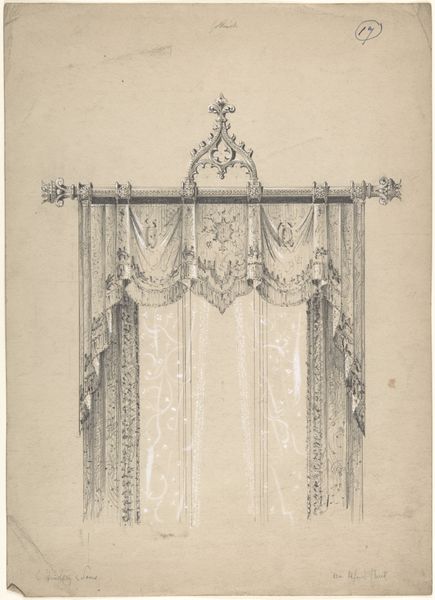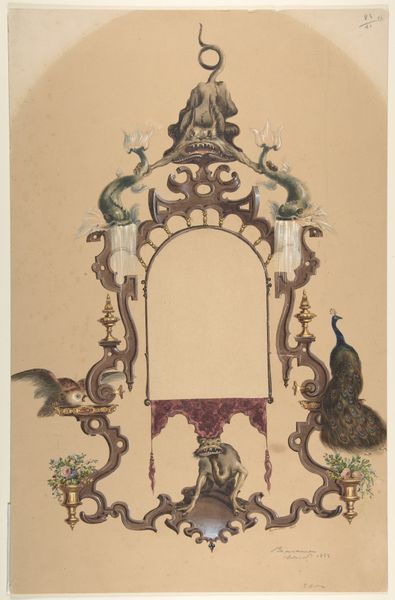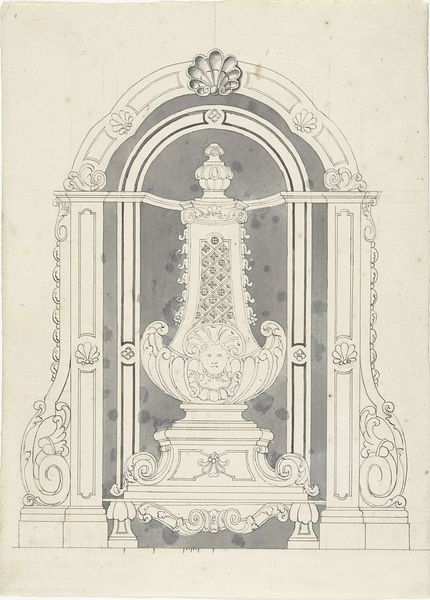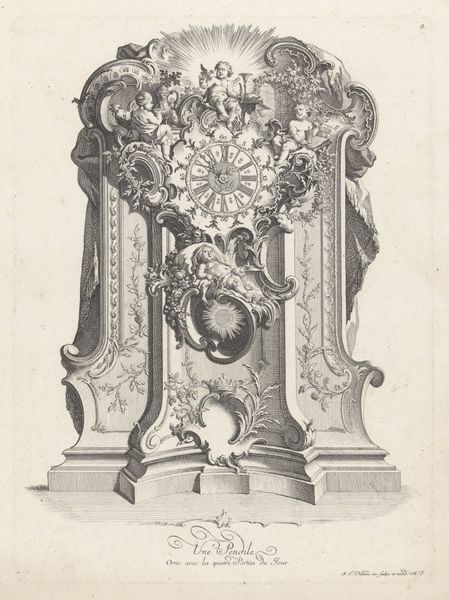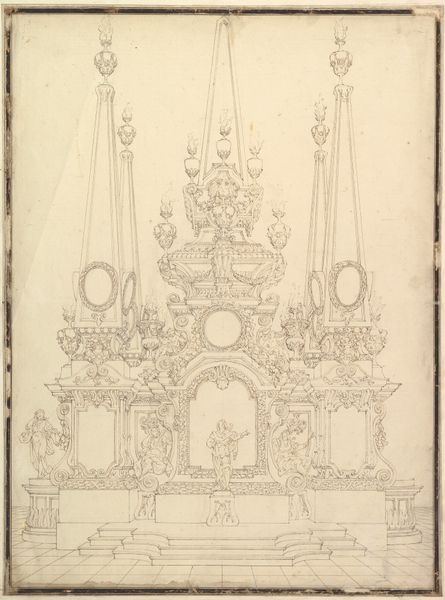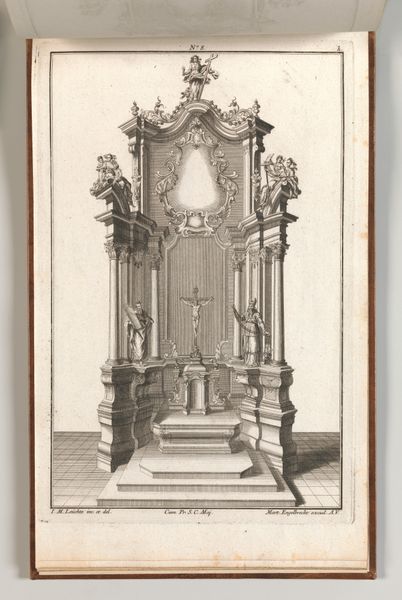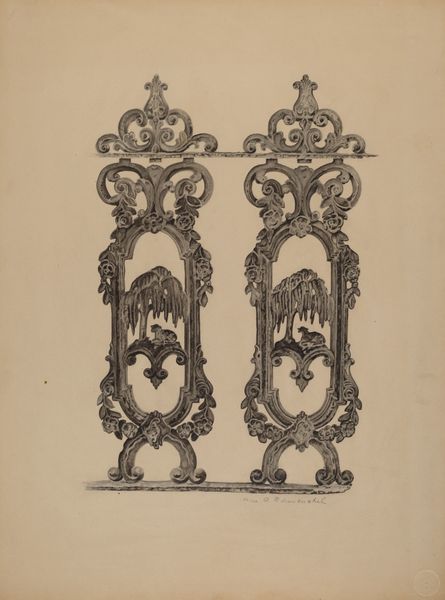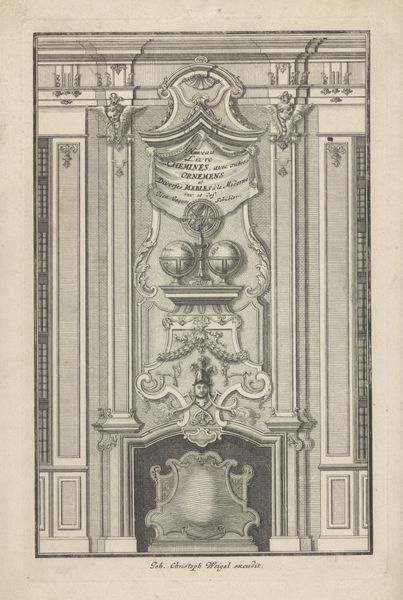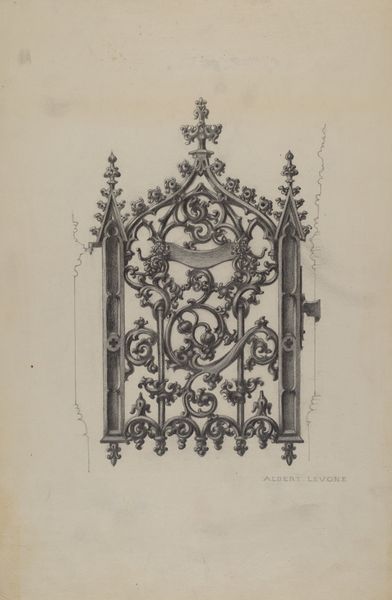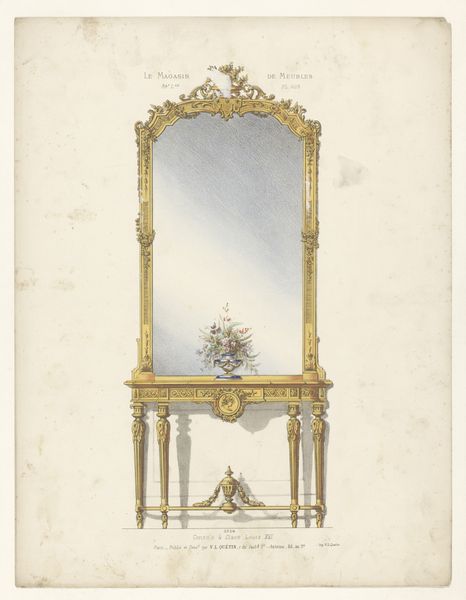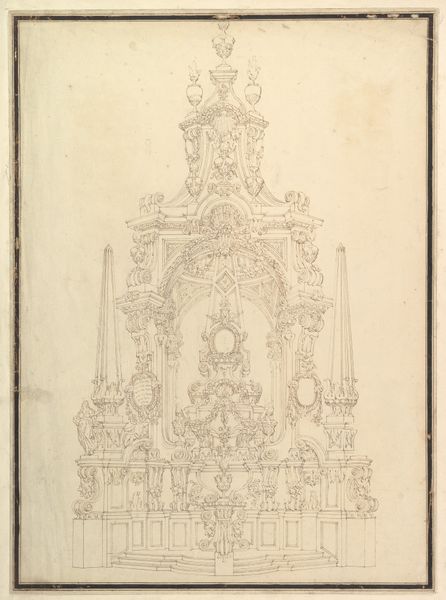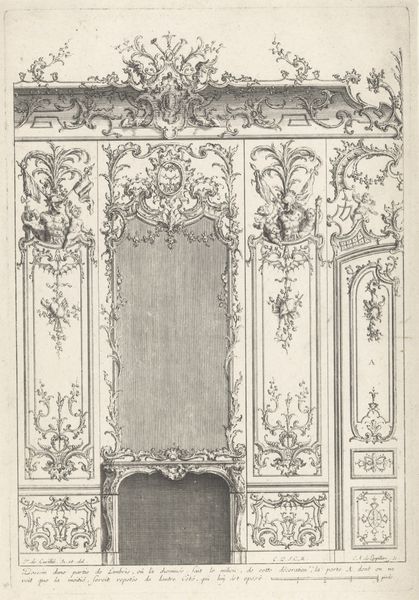
drawing, ink
#
drawing
#
form
#
ink
#
line
Dimensions: overall: 30.5 x 22.9 cm (12 x 9 in.) Original IAD Object: none given
Copyright: National Gallery of Art: CC0 1.0
Editor: This is a drawing entitled "Carved Walnut Hall Rack," created around 1936 by Thomas Byrne. The rendering in ink feels both intricate and a little… melancholy to me. What’s your take on this piece? Curator: The stark contrast in Byrne’s drawing makes me consider how even mundane domestic objects carry embedded social narratives. A hall rack, traditionally placed near an entryway, served as a transitional object between the private sphere and the public world. Editor: That’s an interesting way to put it. A liminal space. Curator: Exactly! Now, think about 1936. What anxieties might people have carried with them as they entered or left their homes? What roles—gendered or otherwise—did that hall rack subtly enforce, by holding hats, coats, umbrellas? Does this connect to domestic labor or gender roles for you? Editor: I hadn't considered that at all. The rack is so ornate; I was just thinking about craft, but seeing it as a symbol of societal pressures... Curator: And look at how Byrne renders the mirror--as a series of vertical bars that obscure, not reflect. Is Byrne making a comment on how society obscures identity, creating a fractured reflection of the self? What are the implications of having such a divided identity? How can society reform to accept a holistic sense of self for those who are made to feel ‘other’? Editor: Wow, I see it completely differently now! Thank you for broadening my perspective. Curator: It’s all there in the piece, just waiting to be excavated! I think reflecting on pieces such as this helps contextualize not only society in the 30s, but current day constraints and social struggles that continue to permeate the American Dream.
Comments
No comments
Be the first to comment and join the conversation on the ultimate creative platform.
